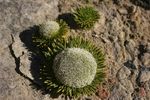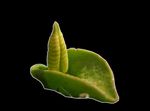Code of Conduct - Falklands Wild Plants
←
→
Page content transcription
If your browser does not render page correctly, please read the page content below
Falklands Conservation
PO BOX 26, Falkland Islands, FIQQ 1ZZ
+500 22247
info@conservation.org.fk
Code of Conduct –
Falklands Wild Plants
Version 1. December 2019
This Code of Conduct is for those enjoying, photographing, picking,
or collecting wild plants for recreation or study.
The Code provides guidance and information - it should not be taken as definitive statement of the law and
Falklands Conservation do not accept any responsibility for any errors or omissions. The guidance is not aimed at
people collecting wild plants, fruits, or seeds commercially or for ecological restoration projects. This code has been
broadly adapted from the Botanical Society of Britain and Ireland’s Code of Conduct (2017 revision) with their kind
permission.
Key points
Always gain permission from land owners to visit private land and before picking, uprooting or collecting
wild plants.
To conserve wild plant populations please don’t take many - and never more than one in every 20
flowers.
A list at the end of this document shows both legally protected flowers which cannot be disturbed, and
rare plants that are not legally protected but should not be collected as they are endangered.
When picking or photographing plants be mindful of other wildlife - you may be close to a nest site or
fragile plants.Falklands Conservation
Code of Conduct for Falklands Wild Plants
Page 2 of 4
Wild plants and the law
General
The Conservation of Wildlife and Nature Ordinance (1999), makes it an
offence to deliberately pick, collect, cut, uproot or destroy a protected
wild plant without a licence unless this is done incidentally as a
consequence of a legal action by the land owner or legal occupier.
Protected plants (correct as of 26th August 2019) are listed at the end
of the document. The list may be updated - for up-to-date information
consult the Government’s Environmental Officer.
This native violet is protected
In National Nature Reserves
The Conservation of Wildlife and Nature Ordinance (1999) gives the Governor power to create National Nature
Reserves. Each National Nature Reserve can have its own legal provisions regarding wild plants. Both the Sea Lion
Island National Nature Reserve and Patricia Luxton National Nature Reserve have stringent regulations prohibiting
the picking, plucking, or uprooting of plants.
International protection and trade
All exports out of the Falkland Islands of plants or plant parts may need an
export permit, Falkland Islands Customs and Immigration Department should be
consulted to provide guidance. All species of orchid, worldwide, are protected
from international trade by the Convention on the International Trade in
Endangered Species (CITES) and require CITES permits for transport between
countries. People transporting orchids without a permit risk heavy fines and
even prison.
Gavilea araucana: protected
Introduction of alien plants
The Conservation of Wildlife and Nature Ordinance (1999) protects native
wildlife and habitats by making it an offence for a person to plant or otherwise
cause to grow in the wild any plant of a kind not ordinarily found growing in the
wild in the Falkland Islands.
Picking and collecting if not protected by law
This section provides guidance for people who wish to pick plants for pleasure, or to gather food for personal use.
It does not address the commercial gathering of plant material. The aim of the guidance is to promote the
conservation of wild plants whilst encouraging enjoyment of our wildlife and wilderness.
Always get permission from a landowner before you visit or pick plants.
Only pick plants which you recognise and know to be plentiful. The plants should be present in large patches
in the area that you are collecting from.
Consider other visitors and wildlife first – are flowers best left for others to enjoy, or berries for small birds to
eat?Falklands Conservation
Code of Conduct for Falklands Wild Plants
Page 3 of 4
Never exceed the ‘one in twenty’ rule: If there are twenty flowers it is reasonable to take one – If you wish to
take two, there should be forty etc.
Do not uproot plants.
Be careful not to damage other vegetation when picking the plants – for example large, low- growing cushion
plants could be hundreds of years old.
Rare and threatened plants which are not protected by law outside of National Nature Reserves are included
in the list at the end of this document. These plants should not be picked as you may damage their chances
of surviving in the Falklands. Such rare plants can be difficult to identify and a useful rule of thumb is that if a
plant looks unusual or if there is little of it – do not pick it. Consider instead taking good quality photographs
and recording its location. If you would like to learn more about Falklands rare and threatened plants, a
useful identification guide is available online.
Falkland daisies at Shallow Harbour Farm; a wonderful native plant habitat
Botanical collecting and research
If you plan to collect plant material for research or inclusion in a collection please contact the Falkland Islands
Government Environment Unit for advice and information. They may require that you gain a research permit and
can also provide information about existing collections including those at the Falkland Islands National Herbarium
at Falklands Conservation.
Educational and training groups
Field trips are a brilliant way to enthuse groups about wildlife. It is the responsibility of leaders of field groups to
obtain permission from landowners and ensure that groups comply with the law. In some areas unrestricted
activity by a large group may endanger threatened plant populations, to avoid this leaders should give clear
guidance in-line with this document.
Fruits, seeds and fungi
Traditional gathering of berries and mushrooms should be carried out in moderation (relative to their abundance),
and only for plants that are common. Please only pick and eat what you know is safe to do so. Collecting wild
flower seed for private gardening must be done sparingly and only common species, which are not protected by
law, should be gathered.
Photography
Please take care when photographing plants. Avoid ‘gardening’ before taking photographs as this can expose a
plant to grazing or the elements. Have regard for fragile mosses, liverworts, lichens and fungi growing around your
target plant.
Statutory agencies responsible for plant conservation
The Environmental Officer at Falkland Islands Government’s Policy and Economic Development Unit is responsible
for legal aspects of plant conservation.Falklands Conservation
Code of Conduct for Falklands Wild Plants
Page 4 of 4
Appendices
1. Legally Protected plants – From Schedule 3 of The Conservation
of Wildlife and Nature Ordinance (1999)
Adders Tongue (Ophioglossum crotalophorides) Falklands False Plantain (Nastanthus
Dusen's Moonwort (Botrychium duseni) falklandicus)
Chilean Maidenhair Fern (Adiantum chilense) Hairy Daisy (Erigeron incertus)
False Plantain: Protected
Feltons Flower (Calandrinia feltonii) Falkland Pondweed (Potamogeton linguatus)
Shrubby Seablite (Suaeda argentinensis) Yellow Pale Maiden (Sisyrinchium chilense)
Falklands Rock Cress (Phlebolobium Pale Yellow Orchid (Gavilea australis)
maclovianum) Yellow Orchid (Gavilea littoralis)
Fuegian Saxifrage (Saxifraga magellanica) Gaudichaud's Orchid (Chlorae gaudichaudii)
Native Yellow Violet (Viola maculata) Fir Clubmoss (Huperzia selago)
Yellow Lady's Slipper (Calceolaria dichotoma) Comb Fern (Schizaea fistulosa)
Leathery Shield Fern (Rumohra adiantiformis)
2. Globally and nationally rare and threatened or near-threatened
plants.
This list is from The identification guide to globally and nationally threatened vascular plants of the Falkland Islands
(R Upson, Falklands Conservation, 2012). It is based on IUCN threat criteria (2001).
Globally threatened species Sage’s Sedge (Carex sagei)
Brittle Bladder-fern (Cystopteris fragilis)
Hairy Daisy (Erigeron incertus)
Fuegian Whitlowgrass (Draba magellanica)
Antarctic Cudweed (Gamochaeta Antarctica)
Waterwort (Elatine triandra)
Silvery Buttercup (Hamadryas argentea)
Pale Yellow Orchid (Gavilea australis)
Falkland Nassauvia (Nassauvia falklandica)
Strap-fern (Grammitis poeppigiana)
False Plantain (Nastanthus falklandicus)
Patagonian Hawkweed (Hieracium patagonicum)
Falkland Rock-cress (Phlebolobium maclovianum)
Bramble-fern (Hypolepis poeppigii)
Moore’s Plantain (Plantago moorei)
Fir Clubmoss (Huperzia fuegiana)
Darwin’s Filmy-fern (Hymenophyllum darwinii)
Nationally threatened species Berg’s Hair-grass (Koeleria permollis)
Antarctic Prickly-burr (Acaena Antarctica) Adder’s-tongue (Ophioglossum crotalophoroides)
Maidenhair-fern (Adiantum chilense) Sea Plantain (Plantago maritima)
Fuegian Foxtail (Alopecurus magellanicus) Native Pondweed (Potamogeton linguatus)
Spider-flower (Arachnitis uniflora) Leathery Shield-fern (Rumohra adiantiformis)
Spleenwort (Asplenium dareoides) Tasselweed (Ruppia filifolia)
Chilean Tall-fern (Blechnum cordatum) Shore Pimpernel (Samolus repens)
Dusen’s Moonwort (Botrychium dusenii) Fuegian Saxifrage (Saxifraga magellanica)
Yellow Lady’s Slipper (Calceolaria biflora) Comb Fern (Schizaea australis)
Small Dusky Sedge (Carex acaulis) California Club-rush (Schoenoplectus californicus)
Banks’ Sedge (Carex banksii) Scullcap (Scutellaria mummulariifolia)
Falkland Sedge (Carex macloviana) Shrubby Seablite (Suaeda argentinensis)
Fuegian Sedge (Carex magellanica) Fuegian Violet (Viola magellanica)You can also read
























































